Back when I was in TCM school, my teachers used to say there are no wrong treatments in Chinese medicine, only the wrong diagnosis. The key to a successful outcome for all our patients starts with the diagnosis, and that’s probably the hardest part in Chinese medicine.
Today, I’m diving deep into the heart of Chinese medicine diagnosis, breaking down the complexity into a practical nine-step framework that you can apply with each of your patients and get great results.
Whether you are a practitioner who is still trying to refine your skills or a TCM student who is baffled by diagnosis like I was when I was in school, this framework is a game changer and I can’t wait to go through each step with you today.
Be sure to take notes, as you watch this video, it will sure be a game changer for your diagnosis
Keep rocking using TCM,
Clara
TCM Geek
PS: Want more? Learn How to EASILY differentiate 10 common symptoms when making a TCM diagnosis, and make sure to check out my Foundation & Diagnosis Resource Page! And if you haven’t invested in my book Chinese Medicine Made Easy, get your copy here! 🙏
9 STEP Framework for Effective Chinese Medicine Diagnosis
9 STEP Framework for effective Chinese Medicine Diagnosis
Step 1: Yin Yang Theory
Always start with the basics, the Yin Yang theory. Begin by looking at the eight principles: Yin and Yang, hot and cold, internal and external, deficiency and excess. By determining if it is an internal or external problem and whether it is more cold or hot, you can start to form a better understanding of the diagnosis.
Step 2: Five Element Theory
The next step is to utilize the Five Element theory. This theory helps identify which element is affected and where it all started. By examining the symptoms and considering the relationships between the elements, you can gain valuable insights into the root cause of the condition.
Step 3: Four Vital Substances
Next, take a closer look at the Four Vital Substances: Qi, blood, body fluid, and essence. Each substance plays a crucial role in maintaining health, and their deficiencies or imbalances can give you further clues about the diagnosis. Understand the signs of deficiency or excess for each substance and how they relate to the patient’s symptoms.
Step 4: Zang Fu Organs
The Zang Fu organs help refine the diagnosis even further. By differentiating the symptoms and determining which organs are most affected, you can tailor your treatment approach accordingly. Pay close attention to the specific symptoms associated with each organ to guide your diagnosis.
Step 5: Pathogens
Identifying which pathogens are affecting the body is essential for developing an effective treatment plan. External pathogen invasion, such as colds or flu, is more acute, while internal pathogens like wind, cold, heat, dampness, and dryness are often associated with chronic conditions. Understanding the pathogens at play allows for targeted treatment strategies.

Step 6: Six Stages and Four Levels
The six stages and four levels are classical concepts that help analyze the progression and severity of a condition. They can be especially useful for acute cases. The six stages describe how an external pathogen might penetrate the body at different levels, while the four levels explore the heat progression within the body.
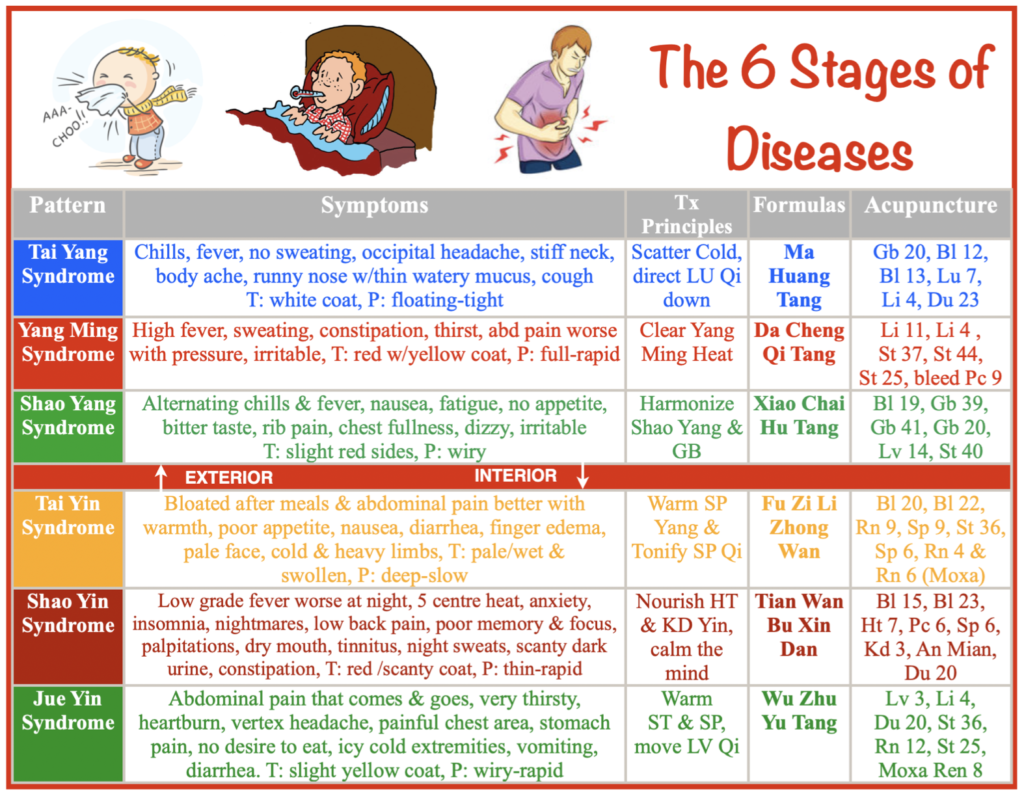
Step 7: San Jiao
The San Jiao refer to the upper, middle, and lower Jiao, each containing different organ systems. By correlating symptoms with the specific Jiao affected, you can develop a more precise diagnosis. Pay attention to the meridians associated with each Jiao to further enhance your treatment protocols.
Step 8: Meridians
Lastly, consider the meridians and their dermatomes. By identifying any dermatomes issues and understanding how they relate to specific meridians and organs, you can gain deeper insights into the diagnosis. Incorporating meridian-specific points into your treatment plan can be highly effective.
Chinese medicine diagnosis:
By following this comprehensive nine-step framework for effective TCM diagnosis, you can approach each patient with confidence and precision. Understanding the key concepts of Yin Yang theory, the five elements, the four vital substances, the Zang Fu organs, pathogens, six stages, four levels, three Jiaos, and meridians will enable you to make accurate diagnoses and provide targeted treatments. Remember, the key to successful outcomes lies in the quality of your diagnosis. Use this framework to unlock new levels of effectiveness in your TCM practice.
The 9 Steps Framework for effective Chinese medicine diagnosis Video Transcript
Back when I was in TCM School my teachers used to say, “There are no wrong treatments in Chinese medicine, only the wrong diagnosis.”
The key to have a successful outcome for all our patients starts with the diagnosis and that’s probably the hardest part in Chinese medicine.
Today I’m diving deep into the heart of Chinese medicine diagnosis, breaking down the complexity into a practical nine-step framework that you can apply with each of your patients and get great results. Whether you are a practitioner who are still trying to refine your skills , or TCM student who is still baffled by diagnosis (like I was when I was in school!)
This framework is a game changer and I can’t wait to go through each of the step with you today.
Welcome back to my channel if it’s your first time here I’m Clara from AcuPro Academy and I create Chinese medicine and acupuncture contents for students and practitioners making it easy to grasp and fun to learn let’s go.
The 9 Step Framework
In TCM, pattern differentiation and making the right diagnosis can be done according to the nine following options: the Yin Yang theory, the five elements, the four vital substances, the Zang-Fu organs, the pathogens, the six stages, four levels, the three Jiaos, and or the meridians.
These are the nine step we’re going to look at today and I’m going to go through each of them and show you how easy it is to make a TCM diagnosis using the nine-step Frameworks let’s do it.
How to start Diagnosis during your consultation
Let’s start with each consultations. You use your methods of inquiry: palpation, observation, of olfaction, and auscultation. Once you have this done, you need to put the diagnosis and as you know it’s kind of like a puzzle. It feels like it’s so hard to figure out.
The Yin Yang Theory
So let’s start with the basics: always start with the Yin Yang Theory. This is the basics, right? We’re looking at the eight principles. The eight principles are Yin and Yang, hot and cold, internal external, deficiency, excess. You start with those.
Internal versus External
Let’s start first with internal versus external. Internal is going to affect all the organs, the brain, the reproductive system. While external is going to affect the muscular skeletal system, like the bones, the muscle. The joints, the ligaments, the tendons, the skin. That’s more external.
If someone comes in with Carpal Tunnel syndrome, that’s more external–even though it could be a chronic issue. Or someone comes in with menstruation pain like Dysmenorrhea, that’s an internal. Okay?
So you decide what the chief complaint is about, because you want to address first the chief complaint. Of course all the other symptoms are going to make a picture and put the puzzle together, but first we want to know what this person has come for, right?
If they came for insomnia, insomnia is usually an internal problem. When they come because they have sciatica, that’s usually external.
Yin Excess versus Yang Deficiency
Once we decide if it’s internal versus external, we’re going to look at is it more cold or more hot. Meaning, can it come from Yang deficiency (which that’s why the person is always cold) or is excess Yin (which means the person is cold but in one area it’s localized).
Is the person cold all the time, all over the body? And they like warm food, warm drinks and they like to be warm?
Or is it that they are cold in one area like with Raynaud’s disease, which is Yin excess.
Another could be excess Cold versus the first one is Yang deficiency. Make sense?
Or it is excess Yang or Yin deficiency? Meaning it’s the hot person, right?
Yang excess versus Yin Deficiency
Yang excess would have big symptoms! Red face, anger, insomnia where the person doesn’t sleep at all all night. There’s a red tongue with yellow coat.
While Yin deficiency is going to be more irritability toss, and turn all night. Red cheeks and no coat on the tongue.
We differentiate those two, and then we decide is this more of heat or cold depending if it’s excess or deficiency.
So the eight principles were we’re going to look at deficiency and excess. We have decided if it’s cold or hot deficiency, or excess and the problem is internal or external. Once you’ve got this, you have a little bit of a better idea. This is your first step of that frame work.
The 5 Element Theory
Now that we know that, let’s say it’s insomnia. It’s an internal problem and the person is always on a hot side. And it’s excess Yang or excess heat. Let’s look at why the Five Element theory is the key to figure out where it all started.
If you look at someone that comes and sees you for low immune system they are saying, “I’m always sick. I get colds and flu and it takes me weeks to recover.” That’s a immune system or a Wei Qi, a defensive Qi that is not strong enough to fight pathogens.
In this instance, we know that it is the Metal. The lung and large intestine element that is affected. Now, what is the root cause?
We can look back and with all our inquiry we realize that this person’s diet is not feeding or generating a good immune system. They don’t have a proper nutritious diet, so that’s Earth. The digestive system, Spleen and stomach not generating a good immune system.
When we treat, we want to treat the immune system, but we also want to treat the digestive system. Now we have two things to look at, but why is this person not eating properly? Maybe it’s because they’re really stressed, so stress affects liver and gallbladder which is the wood element. The wood in the Five Element Theory controls spleen and stomach, creating some issue with spleen and stomach. In turn, spleen and stomach or Earth cannot generate a good immune system.
Now we have to treat the liver, gallbladder or the stress. We have to treat the digestive system and we have to treat the immune system.
The Five Element always tells you where it all started
You have clues of what to look for in the next key frame from that nine step.
The Four Vital Substances
The next step is to look at the Four Vital Substances. We have Four Vital Substances: Qi, blood, body fluid, and Essence.
Essence
Now it’s very easy to start with Essence. I’m going to go back backward, but Essence is either we are deficient or we’re not. You know that the deficiency sign, when it comes to Essence is really going to be: low libido, having reproductive system issues, having gray hair early in life, not straight teeth, bone issues. Anything that’s related to Essence.
Aging faster is going to be your essence deficiency, that’s an easy one. Either there is or there isn’t.
Body Fluid
Now body fluid can either be excess or deficient. Excess is too much dampness and deficiency leads to dryness. Easy. So if you see mucus and a lot of excess body fluid it’s excess dampness. If you see a lot of dryness, it’s dryness is body fluid deficiency. Super easy.
Maybe there’s a balance between dampness and dryness and you don’t see anything, that’s great.
Blood
The next one is blood. Blood can be deficient, can have heat or it can be stagnated, so that’s easy. Now what happen when it’s deficient: pale and pale face, pale lips, pale tongue, poor sleep, poor energy, poor memory, poor vision. You decide is blood being affected and is blood deficient?
Blood Stasis
Now the next one is blood stasis. Blood stasis is pain and purple. Is there purple tongue, purple nails, purple lips, and is a local fixed? Like dysmenorrhea or sciatica or an ankle sprain.
If it was acute, blood heat. On the other hand, means that there’s going to be abnormal bleeding with Heat. Abnormal bleeding may be rectal bleeding, blood in the urine, heavy heavy flooding menstruation. Nose bleeds that is associated with heat, with feeling hot, red tongue, rapid pulse, irritability. That shows you blood heat.
Qi
The last one is Qi and Qi can be deficient, it can be stagnated. It can be rebelling (meaning going the wrong way or the opposite way that Qi is supposed to be) or it could be sinking. Sinking is always Spleen Qi sinking so that’s easy, and that’s usually prolapse or extreme fatigue.
Qi Rebelling
Qi Rebelling affects the lung, the stomach and the liver. Stomach means acid reflux, heartburn, nausea, vomiting that is all stomach rebelling. Lung rebelling is coughing. And liver rebelling is actually Liver Yang Rising which means it’s like the volcano effect. We have irritability, anger, maybe red eyes, high blood pressure. Headaches that are worse at the end of the day, and with stress but feels better with a hot compress.
Qi Stagnation
Qi stagnation shows with irritability. Sighing all the time, moody for women. A lot of PMS. Specifically breast tenderness, bloating, constipation, and cold hands as well. That’s also a Qi stagnation that’s not reaching the extremities.
Qi Deficiency
Qi deficiency is fatigue, weak, a pale tongue and a weak pulse.
Now depending which organs is affected there’s more symptoms to it and that leads me to the next step in our framework which is the Zang-Fu organs.
Zang-Fu Organs
With the Zang-Fu organs we are going to refine the diagnosis. Earlier when we talked about Qi stagnation, we know it’s liver because liver moves Qi. So now liver is Qi stagnation.
We refined the Qi stagnation to level if it was a deficiency of Qi: is it Spleen, is it Lung, is it Kidney, is it Heart? Those are the most common ones.
Look at differentiating the symptoms, if it’s Spleen Qi deficiency, there’s going to be digestive system issue. If there’s Lung Qi deficiency, immune system issue; if there’s Kidney Qi deficiency, we’re going to have usually Lower Gate incontinence. Kidney Qi is in charge of opening and closing the lower Gates, Usually when there is Kidney Qi deficiency, we may have incontinence or getting up at night to pee a lot of times, and we will have dizziness of course. Fatigue, probably knee pain, low back pain that’s going to show up. W
When it comes to Heart Qi deficiency we’re going to see abnormal day sweat and anxiety. See how easy it is right you refine your diagnosis?
If it’s blood deficiency the only three organs that can be blood deficient: Heart, Spleen and Liver. Because Spleen produces blood, liver stores blood, and heart moves blood. So if there is a blood deficiency, it could be either of those.
You can refine your diagnosis a little bit more. Can it be more than one? Of course. Does that makes sense?
When it comes to the Zang-Fu organ, we can refine and decide which organ is affected the most according to symptoms, observation, palpation, Etc.
Pathogens
The fifth step is figuring out which pathogens are affecting the body.
External Pathogens
External pathogen invasion is acute, and that can be a common cold, a virus, a bacteria. This is external pathogen invasion. It could be hypothermia or heat stroke or sunburn.
That is all external pathogen Invasion, which means the pathogen comes in it’s acute. We may have wind heat, wind cold, damp heat, damp cold, or we may have really really strong fire. For example. if you have a heat stroke or a sunburn that’s external pathogen fire invading the body and that creates fever and burn, etc. That’s more for acute, right? Makes sense.
Internal Pathogens
Most of the time we see people when they come and it’s a chronic issue. Internal pathogens there are going to be five, while external the six because. In external pathogens we also have summer heat which doesn’t occur in chronic. Chronic internal pathogens we’re going to have options of wind cold, heat or fire damp and dryness. Those are the five. They can be combined, of course we can have damp cold, damp heat, we can have wind fire, wind cold. All those things can absolutely affect the body.
Internal Wind
Let’s look at examples when there is internal wind. There’s always movement. Remember, wind moves. It can be tremors, ticks, twitches, muscle cramps, spasms or Parkinson’s. Anything that’s been moving abnormally in the body is internal wind.
Dampness is excess body fluid. Dryness is body fluid deficiency.
Then we have cold and hot and again. We talked about this when we talked about the Yin Yang. So you can have internal cold due to deficiency, your excess and internal heat that could be due to excess or deficiency. By the time you get to the pathogens, you know which ones are in the body. Can we have more than one? Of course! We can have a lot of them.
We are going to look back into the Yin Yang. When we talked about the Yin Yang, we said it was acute or chronic. If it’s acute (and again in practice we don’t see as many acute issues), but it’s really important to discuss because we obviously can treat family and ourselves.
When it comes to acute problems looking at number six and seven: the Six Stages and Four Levels. Those two are big lectures. The Six Stages and the Four Levels both come from rhe TCM Classics that were written way back when and are the basis of a lot of our medicine.
The 6 Stages
So the Shang Han Lun is a really big classic book, and it talks about the Six Stages. And the school of thought behind this book is: Cold Invasion would start at the top level stage or at the most superficial stage and slowly. If the body cannot fight, it can get deeper and deeper through each stage all the way to the bottom stage where it makes everything worse for the person’s health.
The top which is the Tai Yang stage which affect the bladder and small intestine. It is the most superficial. The symptoms are not going to be as bad as when it goes all the way down to the Jue Yin stage which affects the liver and pericardium.
This is a big lecture. I’m not going to go into it, but this is a really interesting one and it’s more for acute at this stage, right?
When you see patients, you use this for acute mostly.
Not that you can’t use it for internal and chronic, but I’m not going to go into it now because it’s a big lecture like I said. When it comes to the four levels it comes from the classic Wen Bing Xue. Which is the school of thought that everything starts with heat.
It starts at the Wei level the defensive Qi level. Heat penetrates and we have a sore throat and then it gets deeper into the Qi level. Now we have fever and it can go to the Ying level, which is the nutritive level. And then goes deeper into blood leve,l where we have hallucination, high fever, and it becomes really more dangerous. Those are again are acute and so I’m going to let them be for now.
The Three Jiaos
I think we’re still confused how we use the three Jiaos. The upper Jiao, the middle Jiao, and the lower Jiao. Each of the Jiaos contain different organs. The Zang-Fu organ, so the upper Jiao is heart and lung. Middle Jiao is the digestive system, so spleen and stomach. Some school of thought think that liver and gallbladder is also part of the middle Jiao. Other school of thought puts liver and gallbladder at the bottom with kidney, small intestine, large intestine and bladder.
Personally, I like to put liver gallbladder in the middle, just because on the tongue it’s on the side so it kind of encompasses the middle. That’s my school of thought, but you have to follow what you think is right.
If someone comes in with dampness in the Spleen and heat in the Stomach. Stomach heat rebelling is acid reflex, heartburn, bad breath; but at the same time dampness in the Spleen. Bloating, loose stools, fatigue. That is a damp heat in the middle Jiao. You could still treat the damp in the Spleen and the heat in the Stomach, but also pick points.
Choose points from the San Jiao Meridian to really consolidate your treatment. That’s how we use the three Jiaos.
Meridians
The last step to this framework is the meridians. Meridians I think, sometimes, we forget get to use those. Remember we have a lot of meridians, including dermatomes. Dermatomes are all on the skin. They’re the part of the Meridian on the skin, right?
For example, if we have eczema, or a patient has eczema on the large intestine meridian. Now we know the large intestine meridian is affected. We can go deeper into it and see what else is being affected. Most often it’s going to be the large intestine organ and the lung organ because they are paired and they’re part of the immune system in the skin.
When you look at meridians it’s really important to know the meridians. For example, the collaterals, The liver collateral starts at Liver 5 and goes up in the medial aspect of the thigh and wraps up around the external genitalia. So when there is acute external genitalia issue, like a herpes attack those are a Meridian issue. Often it’s a liver collateral Meridian issue which means (remember I just said the liver collateral starts at liver 5) we need to use liver 5.
Liver 5 is the best point when there is external genitalia issue, by the way
If you haven’t seen my Chinese Medicine Made Easy, my green book it has all the TCM foundation and diagnosis. And it comes with my fillable intake form that you can use on your patients. If you haven’t got your copy yet, what are you waiting for?
In summary
The 9 step framework starts with the basics with the Ying Yang, looks at the Five Element to figure out which one started at all. Then goes into the side which four substances are affected maybe more than one. And then we refine it, with which organ is being affected so we can treat this much more successfully.
Then we look at is there pathogens do we need to get rid of dampness or heat or cold or wind and then we can look if the upper middle or lower Jiaos are affected and use more of the San Jiao meridian to help our treatment. And then we use the Meridian specifically when there is muscular skeletal or skin problem that we could see is affecting certain Meridian. When it come to the six stages and the four levels and external pathogens this is more acute.
I truly hope this was useful and you could start using this framework to make the right diagnosis for your patients so then you can come up with the treatment that is the perfect treatment for your patients with a successful outcome I think the hardest one is the Zang-Fu organ so make sure to watch this video it’ll help you refine your diagnosis when it comes to the Zang-Fu have a fantastic day and no matter what keep rocking it using TCM!

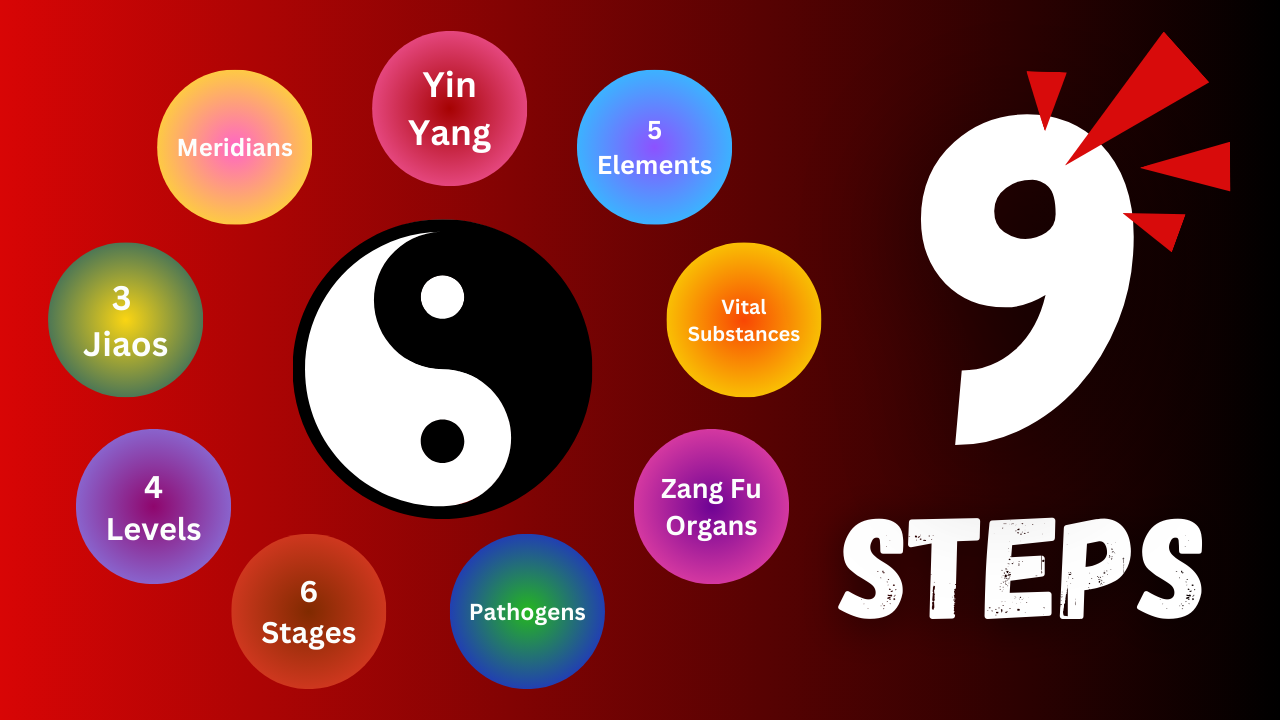

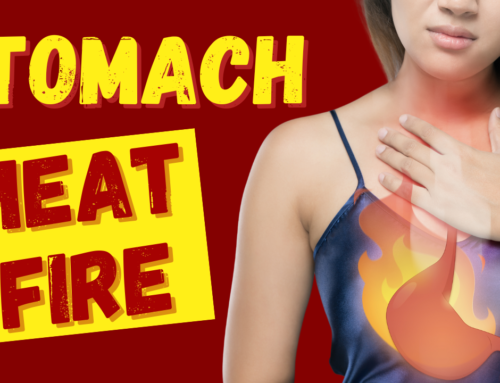
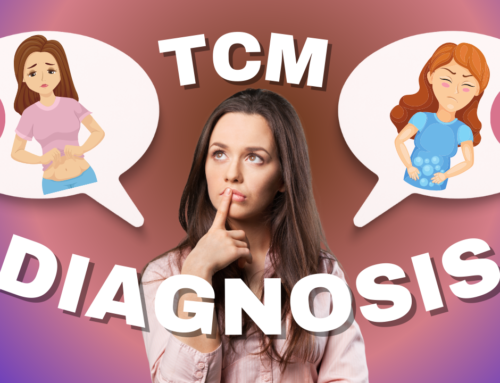

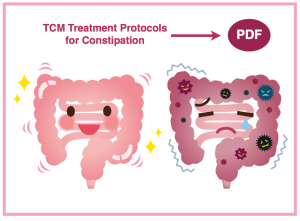
Helpful
Glad you found it useful 🙂
Cok basarili super egitim ingilizce cok bilmedigim icin sikinti iyiki varsiniz cok tsk ederim 🙏🙏🙏🫶
You’re very welcome 🙂
Thank you so much. It is very helpful.
This one is gold ✨
So glad you found it helpful, Betty! 👏🏼